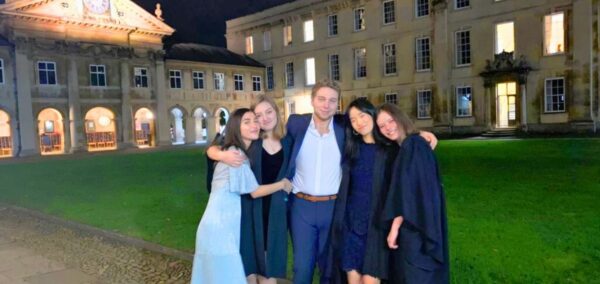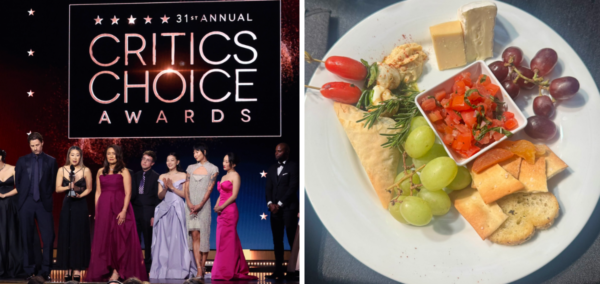
Here are all the Oxbridge subjects teeming with the most private school students in 2024
Beware the history of art department
Oxbridge is crawling with a disturbingly high amount of private school students. Independent schools churned out 32.4 per cent of UK Oxford students and 20.4 per cent of UK Cambridge, which is pretty atrocious when you consider that only 5.9 per cent of kids in the UK go to private schools. The proportions of private school students varies massively among the different Oxbridge subjects. Some courses have five times as many private school students as others.
If you gag slightly at the thought of shooting societies and horse girls, then you’d better not apply for music, history of art or Asian and Middle Eastern Studies. Almost half of the students at these courses went to private school.
There is a pretty strong correlation between the most private school Oxbridge courses and the easiest Oxbridge courses to get into.
This might be because private schools are desperate to justify their extortionately high fees by getting loads of kids into Oxbridge, so they encourage students to go for courses that are easier to get into, instead of courses that are actually useful for their lives. Plus, students with rich parents are probably more likely to be able to follow their dreams and do a degree in music.
The Oxbridge course with the most private school students is the three year Classics course at Cambridge, and the course with the least private school students is the four year Classics course at Cambridge. That’s because the three year course is for the students who did Latin A-Level, which is mostly still taught at overly traditional boarding schools.
The data comes from the Uni of Cambridge’s website and the Uni of Oxford‘s website and refers to the students who are freshers right now.
Most Read
So, here is the percentage of private school students studying different subjects at Oxbridge:
54. Classics (four years) – 12 per cent
53. History and politics, Cambridge – 14 per cent
52. Archaeology, Cambridge – 15 per cent
51. Chemical engineering and biotechnology, Cambridge – 17 per cent
=49. Computer science, Cambridge – 18 per cent
=49. Human, social and political sciences (HSPS), Cambridge – 18 per cent
48. Experimental psychology, Oxford – 20 per cent
47. Law, Cambridge – 21 per cent

The Cambridge law building is so big that the law students literally look down on other humanities students
=45. Biomedical sciences, Oxford – 22 per cent
=45. History and politics, Oxford – 22 per cent
=43. Law, Oxford – 23 per cent
=43. Psychological and behavioural sciences, Cambridge – 23 per cent
=40. Computer science, Oxford – 24 per cent
=40. Mathematics and computer science, Oxford – 24 per cent
=40. Veterinary medicine, Cambridge – 24 per cent
39. Medicine, Oxford – 25 per cent
=36. Medicine, Cambridge – 26 per cent
=36. Natural sciences, Cambridge – 26 per cent
=36. Geography, Oxford – 26 per cent
=31. Geography, Cambridge – 27 per cent
=31. Land economy, Cambridge – 27 per cent
=31. History, Cambridge – 27 per cent
=31. Asian and Middle Eastern studies (AMES), Cambridge – 27 per cent
=31. Architecture, Cambridge – 27 per cent
=28. Engineering, Cambridge – 28 per cent
=28. English, Cambridge – 28 per cent
=28. Physics, Oxford – 28 per cent
=25. Biology, Oxford – 29 per cent
=25. Materials science, Oxford – 29 per cent
=25. Philosophy, Cambridge – 29 per cent
=22. Education, Cambridge – 30 per cent
=22. Economics, Cambridge – 30 per cent
=22. History, Oxford – 30 per cent

If you claw your way into Oxford, then you can take pics of this library all day long
=17. Biochemistry, Oxford – 31 per cent
=17. English language and literature, Oxford – 31 per cent
=17. Mathematics, Cambridge – 31 per cent
=17. Psychology, politics and economics – 31 per cent
=17. Theology, religion and philosophy of religion, Cambridge – 31 per cent
16. Psychology, philosophy and linguistics, Oxford – 33 per cent
15. Modern and medieval languages (MML), Cambridge – 34 per cent
14. Chemistry, Oxford – 35 per cent
13. History and modern languages, Cambridge – 36 per cent
12. Theology and religion, Oxford – 36 per cent
=10. Linguistics, Cambridge – 38 per cent
=10. Anglo-Saxon, Norse and Celtic (ASNAC), Cambridge – 38 per cent
=8. Economics and management, Oxford – 39 per cent
=8. Modern languages, Oxford – 39 per cent
7. Engineering science, Oxford – 41 per cent
6. History of art, Cambridge – 42 per cent
5. Music, Oxford – 47 per cent
=3. Asian and Middle Eastern studies, Oxford – 53 per cent
=3. Classics, Oxford – 53 per cent
2. Music, Cambridge – 55 per cent
1. Classics (three years), Cambridge – 70 per cent
Feature image credit: Louis Brettkelly



















